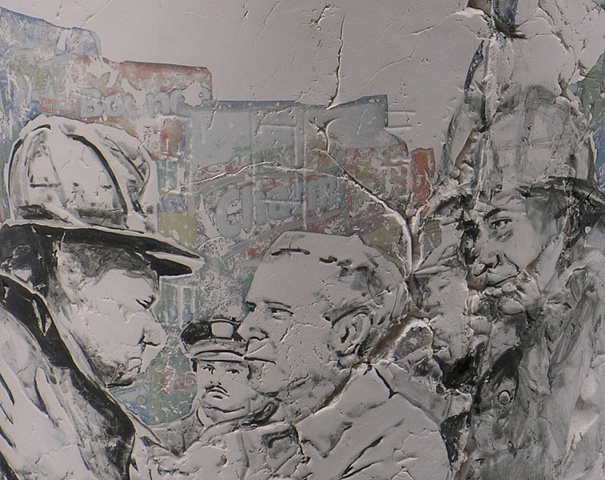
Charmin (detail)
2008
Porcelain
I continue to be concerned about how tragedies are commemorated in public works and spontaneous displays. I have attempted projects focusing on individuals lost in tragic events. Some questions I find compelling about both the mundane and the tragic are: What don’t we know about the people who are “sainted” through their deaths? How has the story about this person been simplified and falsified? In the commemoration of the spectacular event much is lost for the gain of broad representation.
I was under the World Trade Center on September 11, 2001 when the first plane hit the building. I count myself as a survivor of the attack and I worked in disaster assistance for almost a year following the tragedy. I have experienced a vast gap between my experience and the many lived experiences of the event and what I see in the sensationalized political and public discourse about the event. I find it impossible to reconcile my experience with the massive fallout that followed in the form of wars, death, politicking and commercialism.
I am immensely bothered by what I see as disingenuous public displays of grief, which are aimed at political and commercial gain. At times these expressions may be genuine, yet expressed through the corporate or political public venue, they leave an impression of opportunism or crassness. I wonder what are “We,” individuals in the United States, mourning? What are We “never forgetting?” Who is the “We” I am grouped with and at what cost does membership come? What loss did those who were untouched suffer? How are the stories of the dead being told? What is highlighted about them and what is left out or “forgotten?” These last two questions motivate much of my work. These ideas enter my work as I make connections to people and times that have passed with a focus on their stories.
____
Photo: Jeffrey Bruce
I was under the World Trade Center on September 11, 2001 when the first plane hit the building. I count myself as a survivor of the attack and I worked in disaster assistance for almost a year following the tragedy. I have experienced a vast gap between my experience and the many lived experiences of the event and what I see in the sensationalized political and public discourse about the event. I find it impossible to reconcile my experience with the massive fallout that followed in the form of wars, death, politicking and commercialism.
I am immensely bothered by what I see as disingenuous public displays of grief, which are aimed at political and commercial gain. At times these expressions may be genuine, yet expressed through the corporate or political public venue, they leave an impression of opportunism or crassness. I wonder what are “We,” individuals in the United States, mourning? What are We “never forgetting?” Who is the “We” I am grouped with and at what cost does membership come? What loss did those who were untouched suffer? How are the stories of the dead being told? What is highlighted about them and what is left out or “forgotten?” These last two questions motivate much of my work. These ideas enter my work as I make connections to people and times that have passed with a focus on their stories.
____
Photo: Jeffrey Bruce





